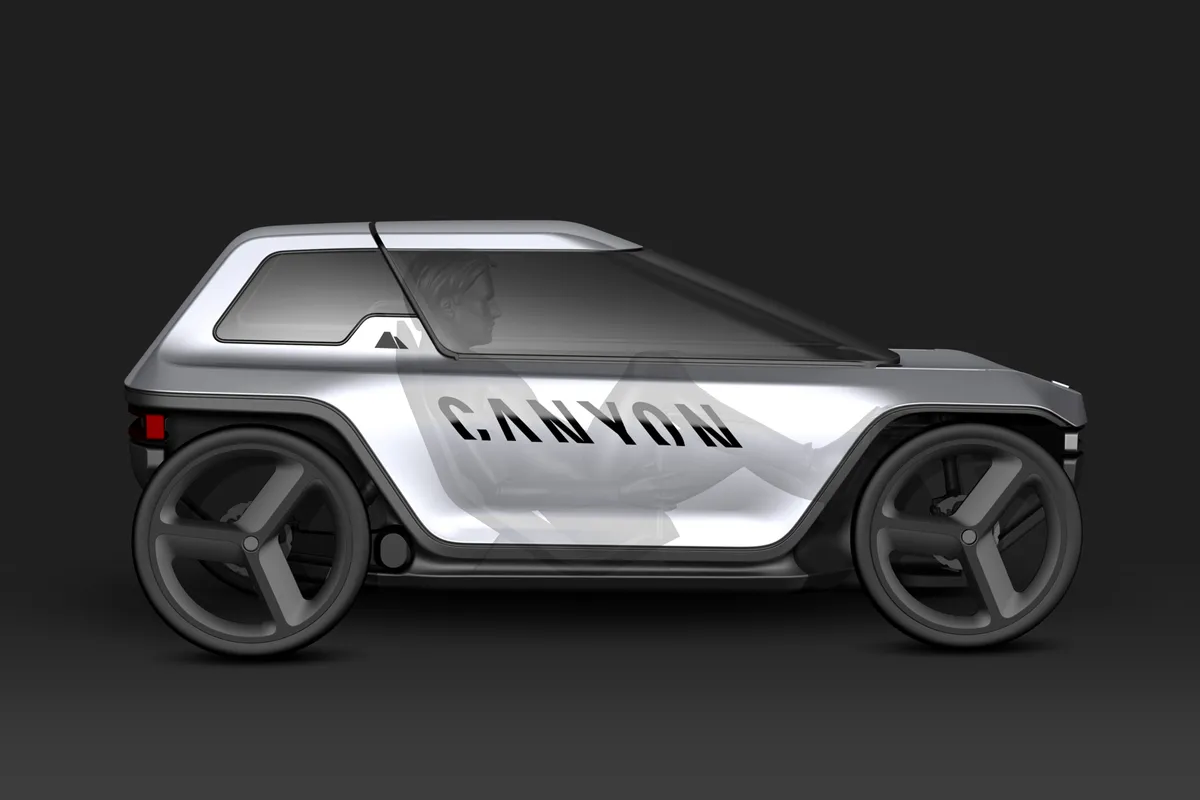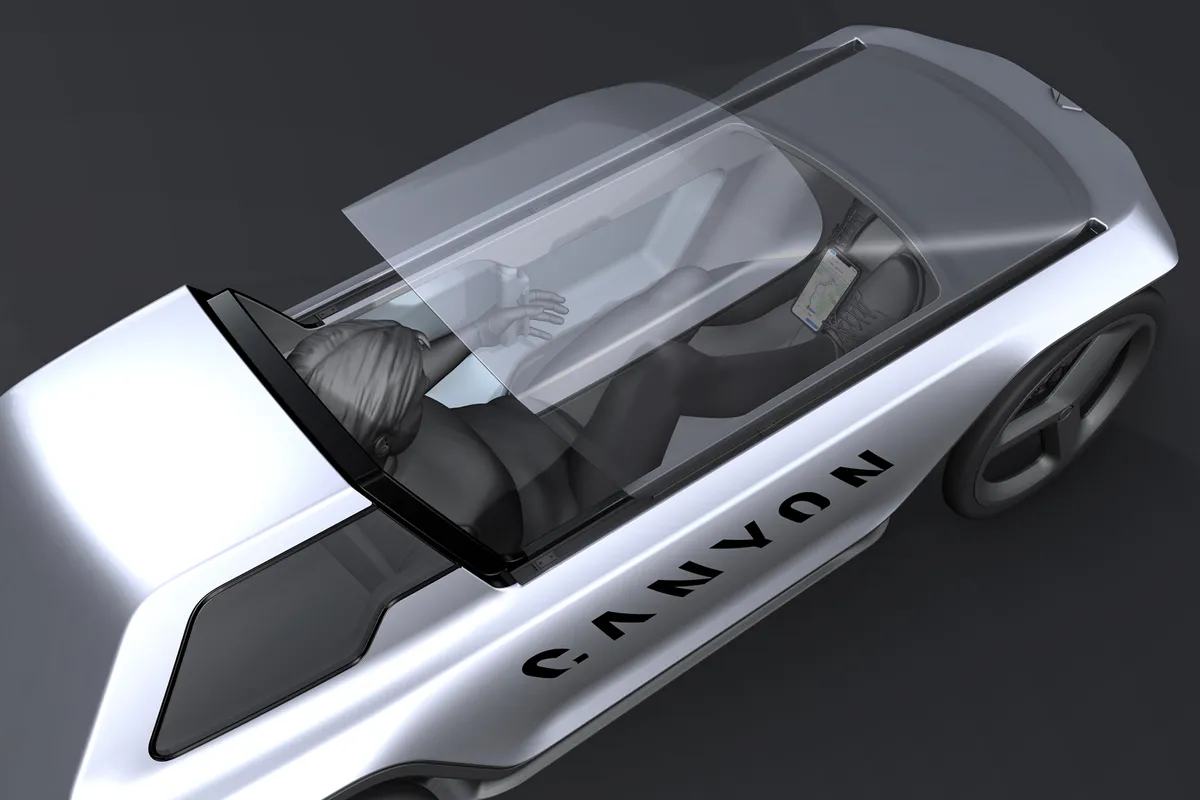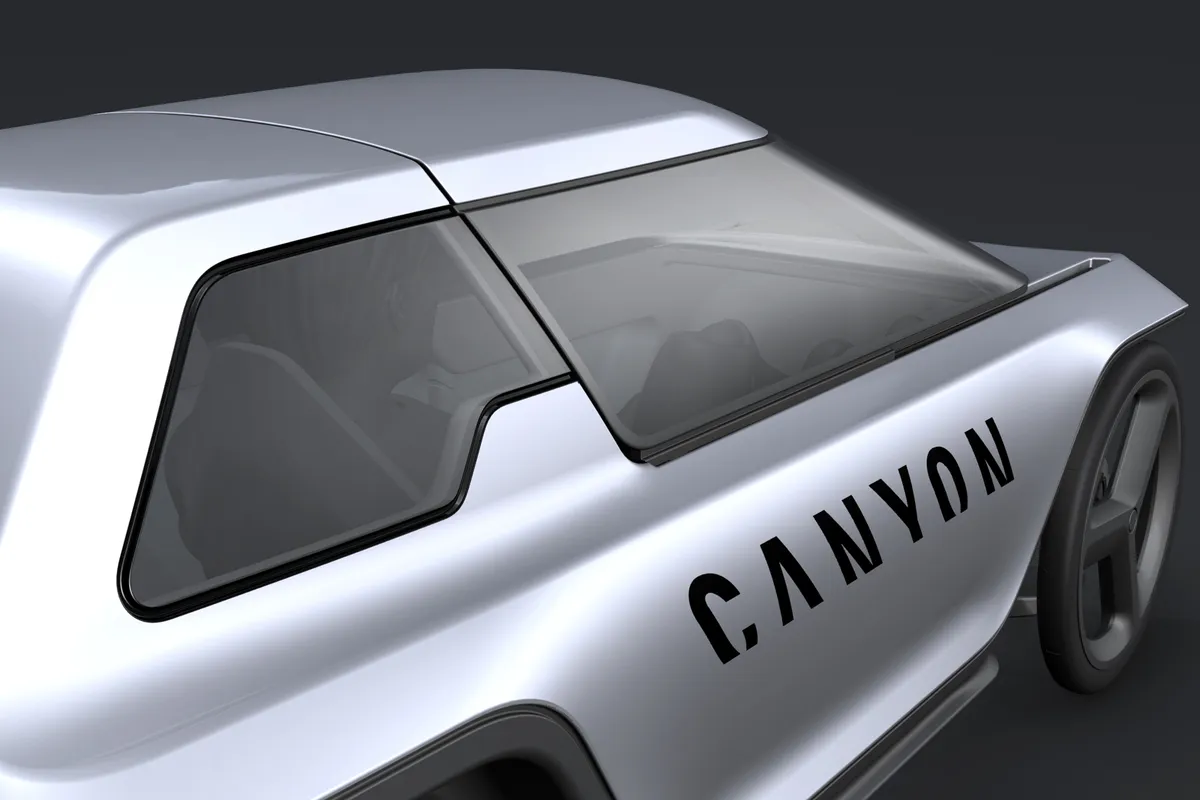Canyon launched two electric bikes for urban riding, the Commuter:On and Precede:On, this week and at the same time provided a glimpse into tomorrow's world with a four-wheeled electric recumbent/bike/vehicle (take your pick). Is this the future of urban transportation?
Electric bikes are growing in popularity – you can see that on the roads and trails, but also from our data on BikeRadar – and offer riders a helping hand or an alternative option to private cars for getting around town and cycling to work.
The coronavirus pandemic, and the prospect of returning to offices worldwide without cramming on to a train or sitting in a traffic jam, has brought that to the fore more than ever.
Emergency legislation has been implemented, pop-up bike lanes installed (with varying success) and bicycle sales are through the roof.
"This has been on the sketch pad of one of our designers for a long time but coronavirus has been the catalyst for trying new ideas," Canyon’s Jack Noy told BikeRadar. "It’s a chance for laws to be developed and see what’s really possible in changing the way we travel around our cities."
Dual-classification electric assistance
Canyon has presented a bold vision for urban travel in its Future Mobility Concept. With four wheels, not two, it’s not a bicycle per se, but a pedal-powered electric recumbent that Canyon believes would enable riders to move seamlessly between road and cycling infrastructure.
Canyon sees this as a dual-classification vehicle, with electric assistance limited to 25km/h when used within cycling infrastructure, as per current legislation in Europe and Australia, before stepping things up to 60km/h when used on the road. (You would need a driving licence and insurance, as things stand).
“Bridging the gap between ebike and car, our Future Mobility Concept presents a revolutionary alternative to both the automobile and the bicycle,” reads Canyon's press material.
“Combining the next generation of lightweight and powerful ebike design with four-wheel stability and storm-proof protection from the elements, our Future Mobility Concept represents a decisive step in re-imagining how bicycle technology can reclaim space on the streets.
“It is a clean vehicle, a statement, and a sign of what’s to come.”
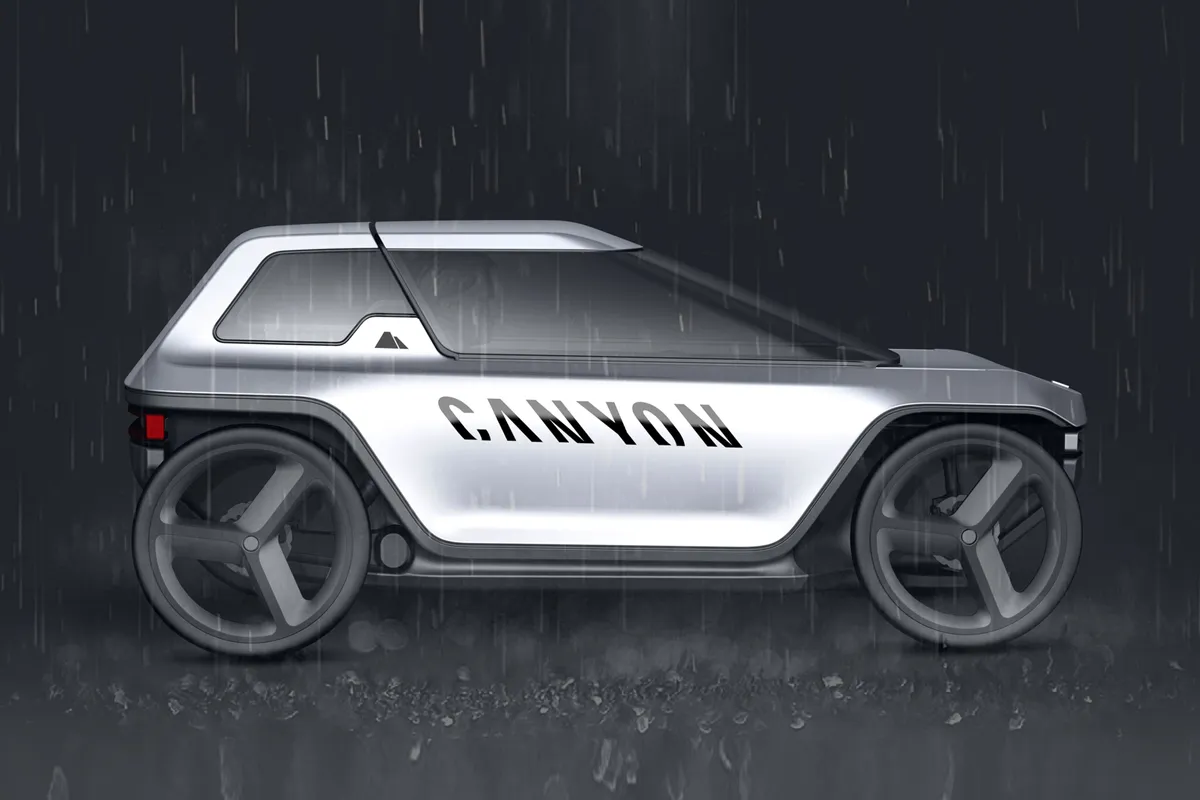
The German brand has built a prototype that’s 83cm wide (not much wider than an e-cargo bike, Canyon says) and 110cm high – compact enough to limit its burden on tight urban streets already clogged with cars (both petrol and electric-powered).
“Designed to seamlessly jump from the street to the bike lane, this low-emission vehicle merges the best parts of cars and ebikes into one to make it the ultimate daily commuter,” says Canyon.
“It’s fast and stable enough to fly down the open road, yet light and agile enough to slide into the bike lane when things get backed up.”
The panoramic capsule protects the rider from inclement weather like a velomobile and has a sliding roof to provide access and ventilation, if you really miss that wind-in-your-hair feeling you get riding a bike.
The capsule also has wipers, heaters to reduce fogging, front and rear lights, a seatbelt and front shock absorbers. The capsule would be opened, and the motor started, via smartphone.
Looks like a car, rides like a bike (kind of…)
Quite simply, it looks like a very small car – and that’s intentional. Canyon believes that for alternative transport solutions to become normalised, they need to appeal both visually and practically to a market that otherwise has little intention in pedalling anywhere.
There’s no steering wheel; instead you steer via two joysticks on either side of the cabin, like a tank and similar to the under-seat steering of some recumbents. The capsule would turn on a seven-metre radius.
There's no drive shaft, either. Power is measured through the pedals at the front and transmitted electronically to the rear, avoiding unnecessary parts that could add weight, take up too much space, and also wear out over time.
There’s room for an adult up front and seat for a child in the back (or space for luggage/shopping).
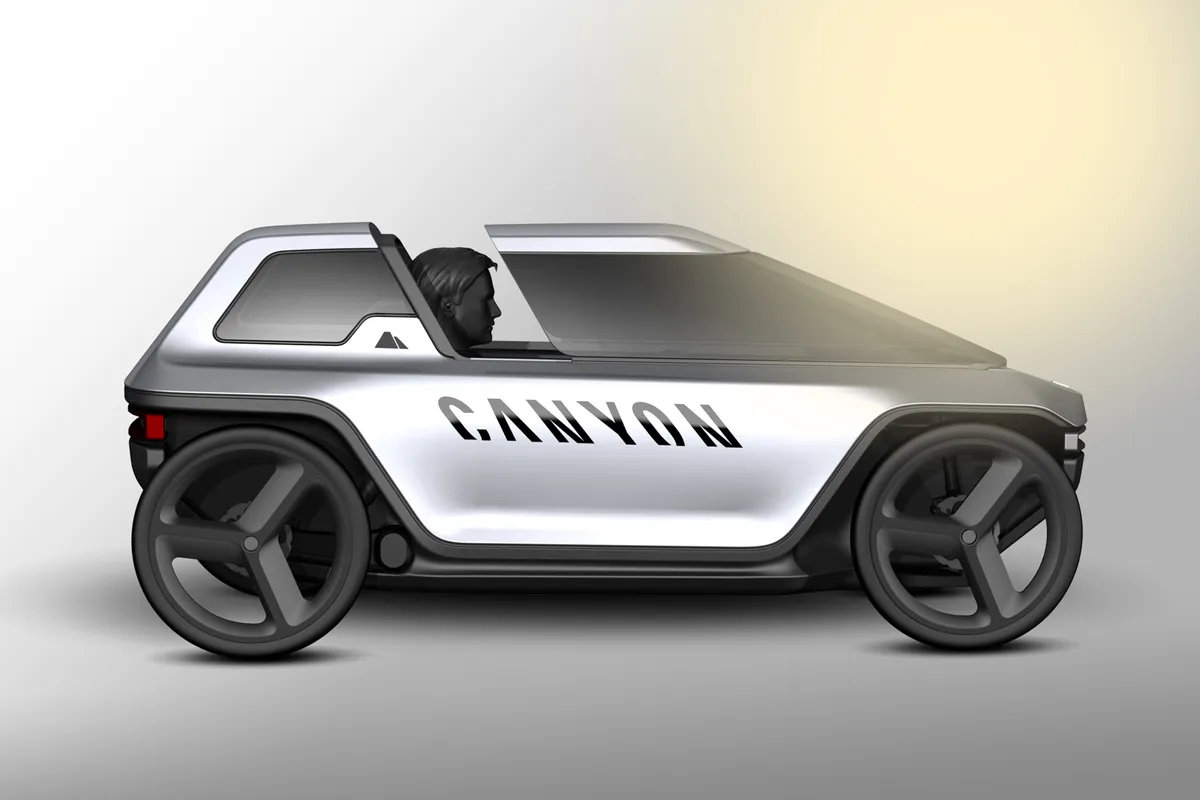
While assistance may be limited to 60km/h at the upper end, it’s fair to say a vehicle like this could achieve speeds far greater on a descent, given its likely aerodynamic credentials and weight (around 95kg, according to Canyon).
Canyon, however, says an automatic brake would also be applied at 60km/h and used to regenerate the battery at the same time. Otherwise, Canyon reckons it could get around 150km of range between charges.
And how much would it cost? If the correct legislation was in place to make the concept viable, and crucially the consumer demand was there, Canyon reckons it could sell the capsule for between €5,000 and €7,000.
“At Canyon, we firmly believe that the future of our cities lies with new, clean forms of mobility: and we’re committed to contributing to their development,” says Canyon.
“Currently, we are re-orienting ourselves in the area of City & Trekking bikes, and we will focus strongly on urban mobility in a broader sense in the future.

"In the coming years we will launch more urban bicycle solutions, but the implementation of other concepts like this will also be intensified.
“The concept gives us a vision that we want to work towards – quickly.”
The Future Mobility Concept will be exhibited in Canyon’s Koblenz showroom from 1 September.
